When it comes to muscle cars that prioritize performance and power, Dodge is undoubtedly a top contender. Dodge has an extensive lineup of muscle cars, dating back to the 1950s.
Brief History
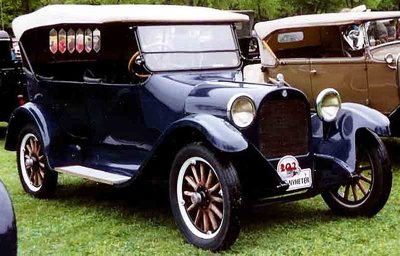 Established in 1900 by the Dodge Brothers (Horace and John), the company initially supplied parts to automakers before introducing its own vehicle. The first Dodge vehicle, the Model 30, was launched in 1914, with a 35hp engine and about 4.4 meters (14.5 feet) in length.
Established in 1900 by the Dodge Brothers (Horace and John), the company initially supplied parts to automakers before introducing its own vehicle. The first Dodge vehicle, the Model 30, was launched in 1914, with a 35hp engine and about 4.4 meters (14.5 feet) in length.
During World War I, Dodge provided the US military with cars and light trucks, which served various military purposes.
In its early years, Dodge focused on producing consumer friendly vehicles and trucks for commercial use. Unfortunately, both Dodge brothers were dead by 1926 and the company changed leadership, this led to its sale to Chrysler in 1928. They were also active during WWII as they were commissioned to build military grade 4x4 and 6x6 trucks, ambulances and even 3-ton trucks.
Who Owns Dodge Now?
Dodge is owned by Stellantis. Stellantis is actually a multinational automotive corporation formed in 2021 from the merger of Fiat Chrysler Automobiles (FCA) and the French company Groupe PSA. Before the merger, Dodge was a part of FCA US LLC (a subsidiary of Fiat Chrysler Automobiles)
Dodge's Muscle Cars
After the World War II, Dodge immediately returned to manufacturing consumer-focused vehicles. This period saw the introduction of iconic, performance-driven muscle cars that embodied the classic Dodge image, boasting sleek designs tailored for speed.
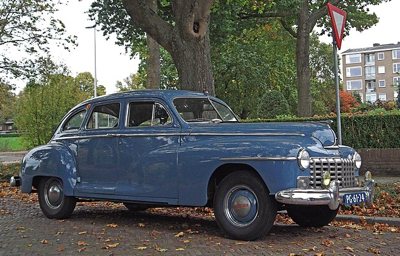 Dodge Custom and DeLuxe
Dodge Custom and DeLuxe
In 1946, Dodge introduced the Dodge Custom and DeLuxe using the same type of engine (I6 Engine). The difference was in their body and interior designs. Both cars came with three-speed manual transmission.
The Coronet
In the early 50s, Dodge decided to improve the design of their vehicles as well as increase the power of their engines. The Coronet, Dart and the Charger were born because of these changes.
The Coronet was first introduced in 1949 and the first generation of Coronet came with the standard I6 engine like most cars from Dodge after the war. It received a significant upgrade in design and engine as it received the 3.9L "Red Ram" engine. The 2nd generation of Coronets were significant because it introduced a more robust design especially on its Coupe versions and the engine itself has set some land speed records - ensuring the vehicle is powerful and speedy. While Coronet continued to be manufactured beyond the 60s, other powerful vehicles from Dodge were later introduced. The Coronet reached a massive 218 inches in length and 79 inches wide.
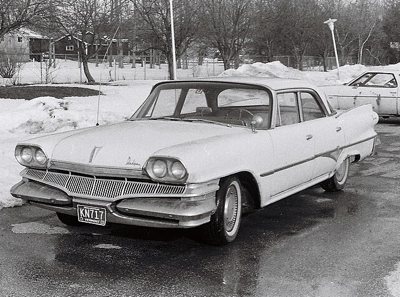 The Dodge Dart
The Dodge Dart
The Dodge Dart was first introduced in 1960 as the affordable option for consumers. It's relatively shorter with an initial 3.7L Slant 6 engine on the first generation of Darts. But even with the limitation in size and power, it became a very popular vehicle considering its price compared to other vehicles of its time. Design-wise the Dart now features the classic Dodge muscle car - relatively wide bodied vehicle with large front engine compartment. The early Darts measured up to 205 inches in length and 71 inches in width.
By the time Dodge Dart was discontinued in the late 70s, Dodge had established itself a leader in car manufacturing in the country and an incredible muscle car builder. The Coronet and Dart laid the initial foundation of muscle cars and during their time, a proper muscle car was released by Dodge - the 1964 Dodge 330. Coming in with a 426 V8 HEMI Engine, this lightweight beast can reach top speed up to 140 mph and could go from 0-60 in just 4.8 seconds. Like most Dodge cars, it's also long and wide measuring 209.8 inches in length and 75.0 inches in width.
While the Dodge 330 is widely believed to be the first muscle car from Dodge, the Dodge Charger line of cars are considered an icon today because it packs speed and power at the same time.
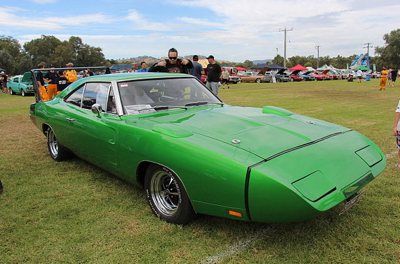 1969 Charger Daytona
1969 Charger Daytona
The perfect example of the Dodge Charger as a top of the line muscle car is the 1969 Charger Daytona. Taking full advantage of the 426 V8 HEMI Engine, this muscle car can push its speed up to 200 mph. It's also the biggest muscle car to date (221.0 in/76.6in). Even though it has the same engine with other top of the line muscle cars from Dodge, it came with aerodynamic improvements that pushes its speed past 200 mph. It's the first car to break the 200 mph speed at NASCAR and is known for being banned because it's simply too fast.
Modern Dodge Charger Cars as Homage to the Past
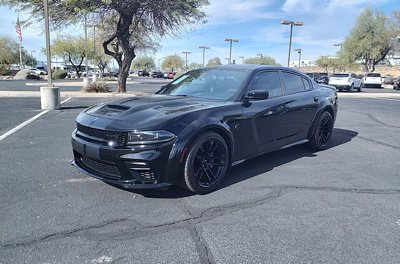 While the classic Dodge muscle cars are considered collectible today by most enthusiasts, the company still offers impressive updates that take full advantage of the latest technologies. The prime example is the 2023 Charger King Daytona - an homage to the 1969 model. This upgrade comes with the 6.2L Supercharged V8 Engine (Redeye) and an insane 807 horsepower with top speed of 203 mph.
While the classic Dodge muscle cars are considered collectible today by most enthusiasts, the company still offers impressive updates that take full advantage of the latest technologies. The prime example is the 2023 Charger King Daytona - an homage to the 1969 model. This upgrade comes with the 6.2L Supercharged V8 Engine (Redeye) and an insane 807 horsepower with top speed of 203 mph.
The King Daytona unfortunately is a limited edition released in 2023. But if you're looking for a road worthy, production muscle car then you'll have to check the Charger SRT Hellcat. This muscle car sports the 6.2L Supercharged V8 Engine (Hellcat) and 707 horsepower and could actually top at 204 mph. These two models capture the muscle and power of classic Dodge cars with upgrades that pushes its speed further.
Dodge Car Sizes - The Size Evolution Of Dodge Cars
The size evolution of Dodge cars has been remarkable.
From the first Model 30 (1914) which measured 14.5 feet in length, through the 1960s introduction of iconic muscle cars like the Charger and Coronet, with the 1969 Charger Daytona stretching up to 221 inches (18.4 feet) in length, and finally to the 2024 Charger measuring approximately 16.53 feet (198.4 inches) in length. Dodge cars have evolved to meet the needs of consumers in speed, design, and environmental safety.
Conclusion
After more than a century of building cars, Dodge continues to build these amazing vehicles that focus on muscle and speed. While they build new vehicles with upgraded technology, their classic cars continue to be collectibles and dream rides for many car enthusiasts.
